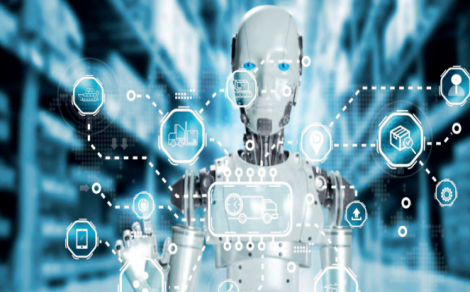Balancing power and precision in hydraulic robotics

Moreover, hybrid systems that combine hydraulic and electric technologies offer a potential path forward. By integrating electric actuators for fine control with hydraulic systems for strength, these hybrid robots can perform tasks requiring both power and precision. For example, in certain medical robots, hydraulics provide the necessary force for manipulating surgical tools, while electric systems handle the delicate positioning required for intricate operations. This blending of technologies allows for a more balanced approach, using each system’s strengths to mitigate their respective weaknesses.
Another key issue that comes with the use of hydraulics in robotics is energy efficiency. Hydraulic systems, despite their power and durability, are typically less energy-efficient than electric systems. This is partly due to energy losses in the form of heat during the compression and decompression of hydraulic fluid. In sectors like manufacturing, where robots are operational for long periods, these inefficiencies can lead to higher operational costs and environmental concerns, particularly in an era where sustainability is becoming a priority.
To address this, modern hydraulic systems are increasingly being designed with efficiency in mind. Technologies such as variable displacement pumps, which only deliver the required amount of hydraulic fluid for a given task, help to reduce waste and increase energy efficiency. Additionally, the development of closed-loop hydraulic systems, where fluid is recycled within the system rather than continuously drawn and expelled, further improves efficiency by reducing the need for constant fluid replacement and minimising energy losses.
The role of hydraulics in automation is also expanding beyond traditional industries like manufacturing and construction. One of the most fascinating emerging areas is in humanoid robotics, where hydraulic systems are being explored for their potential to mimic the power and movement dynamics of human muscles. In humanoid robots, the challenge lies in replicating the fluidity and strength of human movement, which is difficult to achieve with purely electric systems. Hydraulic actuators, because of their high power-to-weight ratio, offer a solution that could allow robots to perform more human-like movements, lifting heavy objects while maintaining balance and coordination. This application, however, remains largely experimental, as the challenges of integrating hydraulics into small, precise robotic systems persist.
Looking ahead, the future of hydraulics in robotics and automation appears to be one of increasing sophistication and integration. As artificial intelligence (AI) continues to develop, the potential for even more refined control systems becomes apparent. AI algorithms could one day optimise hydraulic systems dynamically, adjusting for changes in load, fluid pressure, and even external factors like temperature to ensure consistent performance. This would make hydraulic systems not only more precise but also smarter and more adaptable to a wider range of tasks.
Yet, despite the promise of technological advancements, the question remains whether hydraulics will ever achieve the same level of precision as purely electric systems. For certain applications, such as those requiring micro-level precision, electric actuators are likely to remain the dominant choice. But in areas where power, durability, and high force are required, hydraulics will continue to play an indispensable role.
While hydraulic systems face challenges in terms of precision and energy efficiency, their power, durability, and versatility ensure that they will remain a crucial part of robotics and automation for the foreseeable future. Advances in control systems, hybrid technologies, and AI are already beginning to address these challenges, opening the door for more sophisticated and capable hydraulic robots. As industries continue to demand more from automation, from heavy-duty manufacturing to delicate medical procedures, the role of hydraulics will undoubtedly evolve, balancing power with precision in new and innovative ways. The future of hydraulics in robotics lies not in replacing existing technologies but in complementing them, creating systems that are stronger, smarter, and more efficient than ever before
-
PPMA 2025
23 September, 2025, 9:30 - 25 September, 2025, 16:00
NEC, Birmingham UK -
Advanced Engineering Show 2025
29 October, 2025, 9:00 - 30 October, 2025, 16:00
NEC, Birmingham UK










